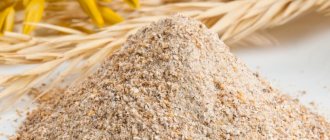Chicken feet benefits and harms
Home » Benefits and harms » Chicken feet benefits and harms
Chicken feet - benefits and harms
Many people don't even know the benefits of chicken feet. They are quite rarely found in dishes on the table. Today, chicken thighs and sirloin are more valued, but it turns out that chicken legs can be used to prepare not only a tasty, but also a healthy dish.
Japanese scientists have noticed that chicken foot broth can help lower high blood pressure. This is because this part of the chicken contains the maximum amount of antihypertensive protein.
Chicken feet for joints
In addition to broth, chicken legs are perfect for making jellied meat, since the bones of the legs contain the maximum amount of collagen, which helps the joint ligaments become more elastic. Accordingly, this dish is especially beneficial for older people.
The benefits and harms of chicken feet
Chinese food lovers know that chicken feet are used quite often in their traditional cuisine. They are baked with vegetables, pumpkin, zucchini or in mustard and honey sauce.
The chemical composition of this product includes: vitamins A, B, C, E, K, PP, choline. Chicken feet contain minerals necessary for the human body, such as calcium, potassium, zinc, magnesium, copper, selenium, iron, manganese, phosphorus, sulfur and sodium. The calorie content of chicken feet is about 215 kcal per 100 g of product.
Nutritionists do not advise getting too carried away with these types of dishes because of their high fat content. Once a week will be enough to extract the beneficial properties of this dish.
Chicken feet can only be harmful if they are abused, as well as any other product, since it is known that what is good in moderation.
WomanAdvice.ru
Calorie content of chicken jellied meat
Jellied meat is a traditional dish for our country. However, due to the labor intensity and relative duration of its preparation, real homemade jellied meat is now a rare guest on our tables. Another reason for this is the high calorie content of traditional beef and especially pork jellied meat.
At the same time, the calorie content of chicken jellied meat is minimal (compared to other types), it is easy to prepare, and in taste it often even surpasses the types of this dish made from other meats.
Chicken aspic and its calorie content
Preparing aspic is very simple, and its calorie content will directly depend on the products included in the finished dish. For example, the simplest chicken jellied meat has a calorie content of only 180 kcal.
The benefits of jellied meat
It is worth noting that the calories in chicken jellied meat practically do not contribute to the appearance of extra pounds. But the benefits of this dish are undeniable: it contains a large amount of natural collagen, which is necessary for the elasticity of the tissues of our body. Its consumption makes the skin soft, helps improve connective tissue in the joints, and also rejuvenates the body's cells.
If you decide to make chicken jellied meat and want to understand how many calories it will contain, consider the following.
The lowest calorie and virtually cholesterol-free is chicken breast jellied meat: 120 kcal.
The highest calorie content of dark meat chicken is thighs and shanks: 210 kcal.
And the healthiest thing will be jellied meat made from wings and chicken legs; if prepared correctly, you practically won’t have to add gelatin to this jellied meat, because it is in these parts of the chicken that the collagen content is maximum.
WomanAdvice.ru
Rapeseed honey - benefits and harms
Not many people know about the benefits and harms of rapeseed honey, since it is quite rare. This honey is characterized by a light yellow opaque color, a pungent aroma and a bitter aftertaste.
The rapeseed plant is used to feed livestock, but it quickly depletes the soil, so very little of it is sown. For this reason, beekeepers face a rather difficult task. It is necessary not only to process this capricious product, but also to find a place where such rare nectar will be collected.
One hectare of land during the flowering period of rapeseed (from May to June) makes it possible to collect up to 90 liters of honey. But in the end, much less honey is obtained, which is due to its rapid crystallization. After honey has been in the comb for more than 24 hours, it is no longer possible to pump it out.
Rapeseed honey is very susceptible to fermentation processes, so it is very important to follow the rules for its storage. The jar of honey should be in a dark and cool place.
Properties of rapeseed honey
Rapeseed honey is often used for various potent medicines and all thanks to its composition, which is radically different from any other variety.
The beneficial properties of rapeseed honey include the presence of vitamins, minerals, trace elements and biologically active substances. A large number of microelements necessary for the normal functioning of the human body explains why rapeseed honey is useful. For example: iron, iodine, sodium, phosphorus, zinc and potassium.
The particular benefit of rapeseed honey is its beneficial effect on the cardiovascular system. The amount of mineral salts in this honey is similar to the amount of salts in the human body, which means it is ideal for treating many blood diseases and diseases related to the heart and blood vessels.
Speaking about the dangers of honey, it is important to note that honey should be consumed with caution by obese people, diabetics and those who are allergic to bee products.
WomanAdvice.ru
Miso soup - benefits and harm
For people who are not familiar with Japanese cuisine, the taste properties of miso soup may seem too specific and exotic. However, the benefits of this dish for the body are simply enormous. That is why not a single Japanese dish is complete without miso paste, the main component of miso soup. This ingredient is included even in the diet of children from a very early age, thereby providing the child’s body with all the essential nutrients and vitamins.
Every Japanese very often starts his day with a serving of miso soup, the benefit of which is that, along with the absence of animal products, it helps maintain the energy balance of the entire body as a whole, replenishing the lack of useful and nutritious substances.
Miso soup ingredients
In Japan, there are many variations of soup recipes, however, in any recipe there are three main ingredients, which are: miso paste, dashi or dashi fish broth, and tofu soy cheese. Miso paste itself consists of beans or grains fermented with the help of special molds. In many regions of Japan, rice is used instead of soybeans, but in any case, the fermentation results in a thick miso paste.
The benefits and harms of miso soup
The calorie content of miso soup is 66 kC per 100 grams of product. Consequently, miso soup is quite low in calories, which is why it is used as part of many diets.
Along with the fact that the calories contained in miso soup are very small, this dish contains a large amount of protein, which determines its benefits for the body.
Miso soup is not recommended for people prone to various allergies, as well as those who have stomach problems and who are contraindicated in large amounts of salt. When miso paste is fermented, a lot of salt is used, so the product itself contains a high concentration of salt.
WomanAdvice.ru
see also
polvr.ru
Report errors and inaccuracies
- The calculations use the weight of only the edible part of the product.
Listed below are the nutrient standards that apply to the site.
Chicken feet are quite rarely seen in dishes on our table. And in vain. Because our grandmothers knew about the benefits of chicken feet for the human body. They happily cooked jellied meat from paws and fed this tasty dish not only to themselves and their peers, since the benefits of rich, congealed broth for joints, especially in old age, have long been known. But even young children, especially those who had problems with hair growth or the thickness of their hair, were given the most appetizing pieces of jellied meat.
Calorie content of chicken feet
The calorie content of chicken feet is 215 kcal per 100 grams of product.
Composition of chicken feet
The chemical composition of chicken feet contains: choline, vitamins A, B1, B2, B5, B6, B9, B12, C, E, K and PP, as well as minerals necessary for the human body: potassium, calcium, magnesium, zinc, selenium, copper and manganese, iron, sulfur, phosphorus and sodium.
Useful properties of chicken feet
The fact is that jellied meat cooked from chicken feet contains collagen, which has a beneficial effect on joints, making them elastic, and stimulates hair growth, which is very important in childhood and old age.
Chicken feet in cooking
For lovers and connoisseurs of Chinese cuisine, it will be interesting that dishes made from chicken feet are in great demand (calorizer). Chicken legs in mustard-honey sauce, stewed with pumpkin, baked with vegetable stew, which necessarily includes zucchini. Wise housewives, when buying fresh chicken at the market, will never throw away chicken legs; they will definitely add them to the chicken broth for fat and a special aroma.
Chicken feet - Calorie content, benefits and harm - YourTaste
- /system/ingredients/images/images/530a/f146/7661/737e/750c/0000/gal/dscn0801.jpg?1393226051
- /noimage/ingredient/thumb.png
- /noimage/ingredient/thumb.png
In European cuisine, the use of chicken by-products was once particularly popular. The staple of Old World dishes has always been either chicken drumsticks or chicken breasts. Chicken feet most often ended up as waste and were used as pet food. Unlike European chefs, Asian masters have long appreciated all the advantages of paws. The range of chicken foot dishes offered by chefs, especially from Southeast Asian countries, is unusually wide. In addition to traditional broths or the well-known jellied meat (jelly), you can prepare a lot of tasty and very healthy dishes from paws. This product is ideal for preparing both first and main courses. You will surely enjoy the rich and aromatic soup of chicken legs, stewed legs in honey sauce, legs stewed with zucchini or pumpkin, rice noodles with fried legs in red spicy sauce.
Benefits of chicken feet:
As an integral part of the chicken carcass, the legs have all the beneficial qualities of fresh chicken. However, unlike rather fatty drumsticks, chicken feet contain much less fat and cholesterol-containing compounds. Nutritionists note a high content of minerals in chicken feet: selenium, copper, zinc, phosphorus, iron, sodium, calcium, potassium, etc. This product contains quite a lot of vitamins: PP, K, E, B12, B9, B6, B2 , B1, A. The first work on the benefits of chicken feet was published by nutrition scientists from Japan. In their work, scientists note the fact that paw broth allows you to quickly and effectively reduce blood pressure. In terms of anti-hypertensive protein content, paws are superior to all products available to us. Eating paws has a very beneficial effect on the joints. The collagen contained in the product increases the activity of joints and promotes the rapid restoration of damaged parts of the joint. In addition, boiled paws, like any other boiled meat, are most quickly and efficiently absorbed by the body and do not contribute to the formation of cholesterol.
Harm and contraindications:
Chicken feet can cause harm to the body, primarily if the necessary heat treatment rules are not followed. It is not recommended for small children to eat chicken feet, as they contain a large number of very small bones that a child can swallow. Nutritionists do not recommend eating paws in large quantities, as they contain a fairly large amount of animal fat. As well as for people with individual intolerance to the substances contained in the product.
vashvkus.ru
Benefits of chicken feet for hypertension
Chicken feet dishes are increasingly appearing on our tables. The main ones are broth and jellied meat. The taste of this broth is even better than that cooked from other parts of the chicken. But few people know that such a decoction is useful for the prevention and treatment of hypertension. The consumer first learned from Japanese scientists that this broth helps lower high blood pressure. It turns out that chicken protein is much more effective than many medications in normalizing blood pressure. And although it was previously believed that ordinary chicken meat could fight this disease, it now turns out that the largest amount of protein that can fight hypertension is found in the limbs, which were previously thrown away or given to animal feed as unnecessary. And now supporters of a healthy lifestyle are increasingly trying to find out about the beneficial and medicinal properties of chicken feet.
Is it possible to eat chicken feet?
Do chicken feet have nutritional value? Yes, chicken feet have very high nutritional value as they are rich in proteins, vitamins and minerals. Some of the health benefits of chicken feet include the ability to improve skin condition, relieve arthritis, and increase joint mobility.
Chicken feet are usually the last thing we think about when purchasing chicken for cooking. We usually prefer chicken breasts or fillets as these parts have a lot of meat. Chicken feet are the least popular because they have no muscle tissue, only bones and skin. It's not surprising that they are often overlooked when preparing chicken dishes. Although the use of chicken feet in cooking is very limited, they actually provide a variety of nutrients to the body. From this article you can learn more about the nutritional value of chicken feet.
Nutritional value of chicken feet
| Nutrients | Boiled chicken feet (100 g) | % of daily value |
| Vitamin A Vitamin E Thiamine Niacin Riboflavin Folate Vitamin B12 Phosphorus Selenium Calcium Iron Potassium Copper | 100 IU 0.3 mg 0.1 mg 0.4 mg 0.2 mg 86 mcg 0.5 mcg 83 mg 3.6 mcg 88 mg 0.9 mg 31 mg 0.1 mg | 2% 1% 4% 2% 12% 21% 8% 8% 5% 9% 5% 1% 5% |
Chicken feet are an excellent source of collagen, a fibrillar structural protein that is responsible for the firmness and elasticity of the skin.
Collagen is an important component of the skin, providing support to the epidermis, its outer layer. It holds the epidermis, preventing it from falling onto the muscles and bones. Including collagen-containing foods such as chicken feet in your diet certainly increases skin elasticity, making it more youthful and beautiful, and helps reduce wrinkles and even prevent their appearance.
Source of cartilage tissue
Chicken feet also contain a lot of calcium, protein and cartilage tissue, which equally contribute to the formation of joint cartilage. Collagen supplements are known to be prescribed to relieve joint pain associated with arthritis. This is because collagen is the main component of cartilage, which is the soft white tissue that attaches to the edges of bones to form joints. Since arthritis is the age-related wear and tear of joint cartilage, taking collagen supplements can help restore it. However, the best option is to get your collagen from natural sources such as chicken feet. Thus, including chicken feet in the diet can provide the body with nutrients that are much needed to maintain healthy joints, as well as increase their mobility.
Squirrels
Chicken feet contain a huge amount of proteins that form muscle tissue. 100 grams of paws contain 19.4 grams of protein, which is a whopping 39% of the recommended daily intake. Therefore, supplementing your physical training with a diet that includes chicken feet will definitely help you gain muscle mass.
Riboflavin (vitamin B2)
Each 100 gram serving of chicken feet provides approximately 0.2 mg of riboflavin (this is 12% of the recommended daily intake). In addition to strengthening the immune system, vitamin B2 also plays an important role in the formation of healthy red blood cells and the metabolism of fats, carbohydrates and proteins into energy.
Folate (vitamin B9)
Chicken feet also contain significant amounts of folate, a key factor in converting carbohydrates into glucose (which is used for energy). With just one 100 gram serving you can get 86 mcg of folate, which is 21% of the recommended daily value.
Vitamin B12
Including boiled chicken feet in the diet increases the intake of vitamin B12 (deficiency of which leads to the development of anemia and fatigue), since every 100 grams of chicken feet contains 8% of the recommended daily intake of this vitamin (this is approximately 0.5 mcg).
Phosphorus
Boiled chicken feet also contain phosphorus in fairly large quantities. A 100 gram serving contains up to 83.0 mg of phosphorus, which is 8% of the recommended daily intake.
Selenium
Chicken feet also contain selenium, a mineral that has antioxidant properties. Including just 100 grams of boiled chicken feet in the diet provides the body with 3.6 mcg of selenium (5% of the daily value).
Calcium
The content of calcium, a mineral beneficial for bones, is especially significant in chicken feet. 100 grams of paws contain 88 mg of calcium, which is 9% of the daily value. Therefore, eating boiled chicken feet certainly promotes healthy and strong bones.
Iron
When consuming 100 grams of boiled chicken feet, the body receives 0.9 mg of iron - 5% of the daily intake. Iron is a mineral essential for the formation of healthy red blood cells. Moreover, the presence of sufficient iron is responsible for the ability of red blood cells to transport oxygen.
Results of one study
Research conducted decades ago by veterinarian Dr. Harry Robertson found that shredded chicken feet could be an effective therapy for nerve regeneration. Chicken foot powder has been shown to have the potential to restore not only bone or muscle tissue, but also nerve tissue. The regenerative properties of this poultry powder may help restore the spinal cord after injury.
Dr. Harry Robertson also claimed that powdered chicken feet extract helped treat burns, acne, gangrene, stomach ulcers and gunshot wounds.
However, the FDA was not satisfied with the hygienic status and testing methods of the study. Extensive research was needed before any supplement could be marketed to treat various ailments, but no such research has been conducted.
Before cooking chicken feet, be sure to cut off the claws using a sharp knife. To keep pathogens at bay, sanitizing the product used is also necessary. It is important to rinse the paws thoroughly under running water and place them in boiling water for about 1 minute. After this, you should place them in ice water, and then peel off the yellow shell. In general, before cooking chicken feet, you need to clean them and remove the claws.
Video
Related link: Benefits of broth from a soup set
Source: buzzle.com
Photo: diytrade.com
www.vitaminov.net











